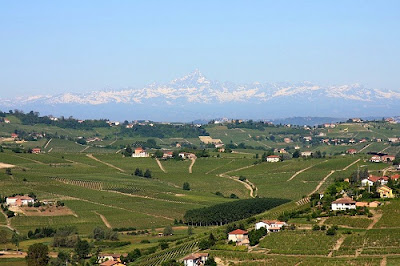Venice and Veneto
Venice our expert cook will teach you
how to prepare the local dishes and entertain you by analyzing the intriguing
fragrances, the exotic origins of some ingredients, the cooking processes as
well as answer your questions about the products being used. Classes are held
in a Palazzo apartment in Venice or in a Liberty Villa at the Lido beach, a
fascinating bathing resort with tall trees and gardens traversed by several
canals.
Euganean Hills enter the fascinating backcountry and discover a
natural area dotted with small villages, vineyards and a typical “osterie”. You
will visit a family-owned wine cellar and drink its sparkling wines: an
extraordinary experience to meet local people and taste genuine products.
Experience the amazing ancient village of the Poet Petrarca, unchanged since
the 14th century.
Prosecco Wine Hills visit a wine cellar for a wine tasting
and lunch overlooking the hills. Dry, lemony, and bubbling, Italy’s answer to
refreshing, sparkling wine. Light, affordable, and fun.
Bolzano & the Dolomites the former Austro-Hungarian city of Tyrol
is surrounded by vineyards, apple orchards, castles and mountains, Bolzano is
one of the most charming cities in Italy. Everyone seems to live peacefully, no
hurry or chaos. The city is crossed by the Adige River and by green beautiful
gardens adorned with colored flowers. A drive along the South Tyrolean Wine
Road with stops for exclusive wine tastings!
Milan Turin
Alba and Langhe
Milan has a proud culinary tradition. Classic local dishes:
cotoletta alla milanese, a breaded veal (pork and turkey can be used) cutlet
pan-fried in butter, cassoeula (stewed pork rib chops and sausage with
cabbage), ossobuco (stewed veal shank), risotto alla milanese (saffron and beef
marrow), busecca (stewed tripe and beans) and brasato (beef or pork with wine
and potatoes). Also, salami milano and gorgonzola cheese. Sweets:
chiacchiere, panettone and tortelli. World-renowned restaurants and cafés can be found in the
historic center, Brera and Navigli districts.
Turin is famous for its use of aromatic herbs, fish, extra virgin olive oil
and no less than 69 traditional local starters. It is also known as the
“capital of sweets”, including Revigliasco cherries and scrumptious chocolate.
Alba
& Langhe a hilly area in Cuneo province famous for its wines,
cheeses, and truffles—particularly the white truffles of Alba – and the
birthplace of slow food. Of interest: Serralunga
Castle and Regional Winery; Barolo
Wine and Corkscrew Museums, Cheese Factory; Grinzane Cavour
Regional Wine Cellar and Castle; Torrone
Factory; Fontanafredda’s
100 hectares of vineyards in the heart of the Langhe hills.
Salento Cuisine: Tradition, innovation and Creativity
Salento is a major agricultural
center specializing in olive oil and wine, hence, numerous opportunities to
experience the famed local wines and traditional cuisine.
Local
Food specialties trace their origin to the successive
invasions over the course of Salento’s history: Tiella – a rice dish with
potatoes and mussels similar to the Spanish Paella, the Fava Beans Puree has
Arab origins and in Gallipoli a variety of chowders with clear Greek roots.
Unique Dishes puccia, friseddhre, pittule, rustici, pasticciotti, sweets made of
almond paste accompanied by the local wines:
Negramaro, Primitivo and Malvasia! Come along for one of our food and wine tasting
events, join a local cooking class and food shopping.













